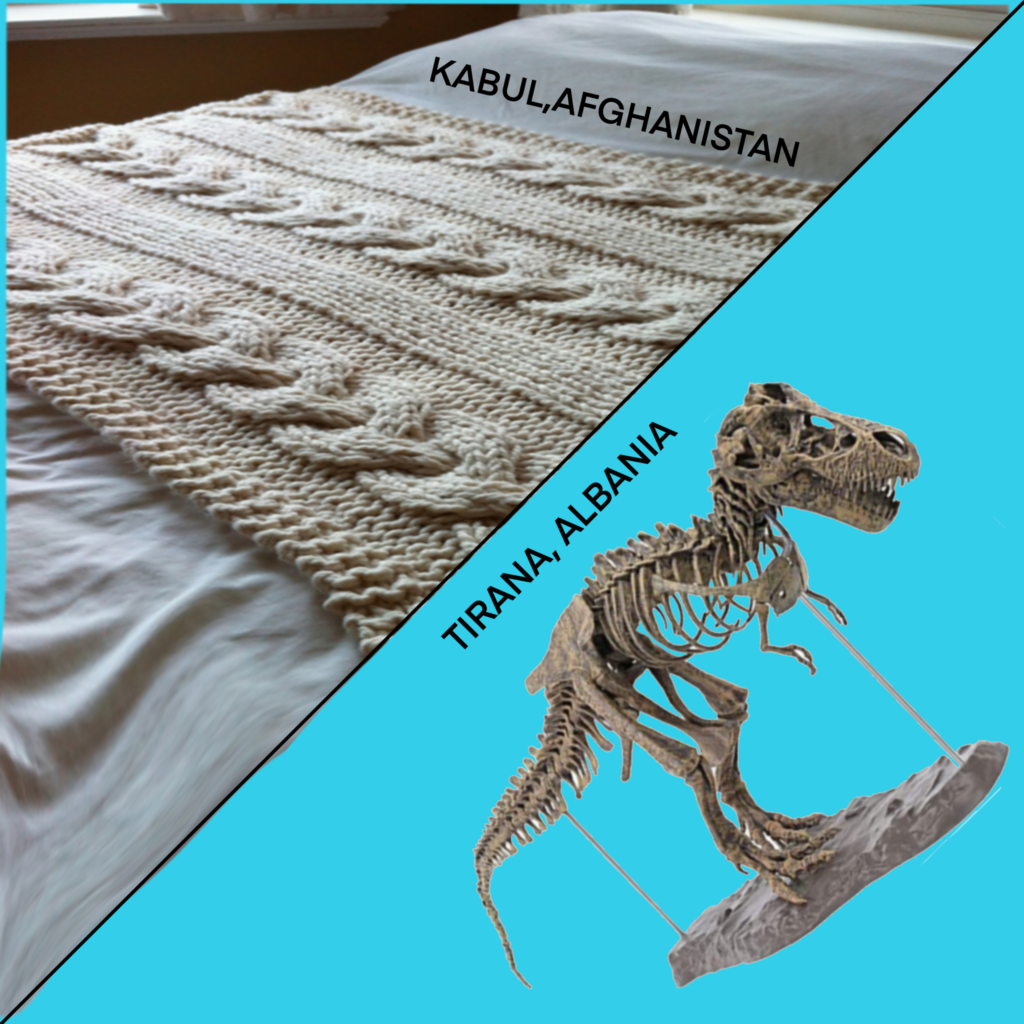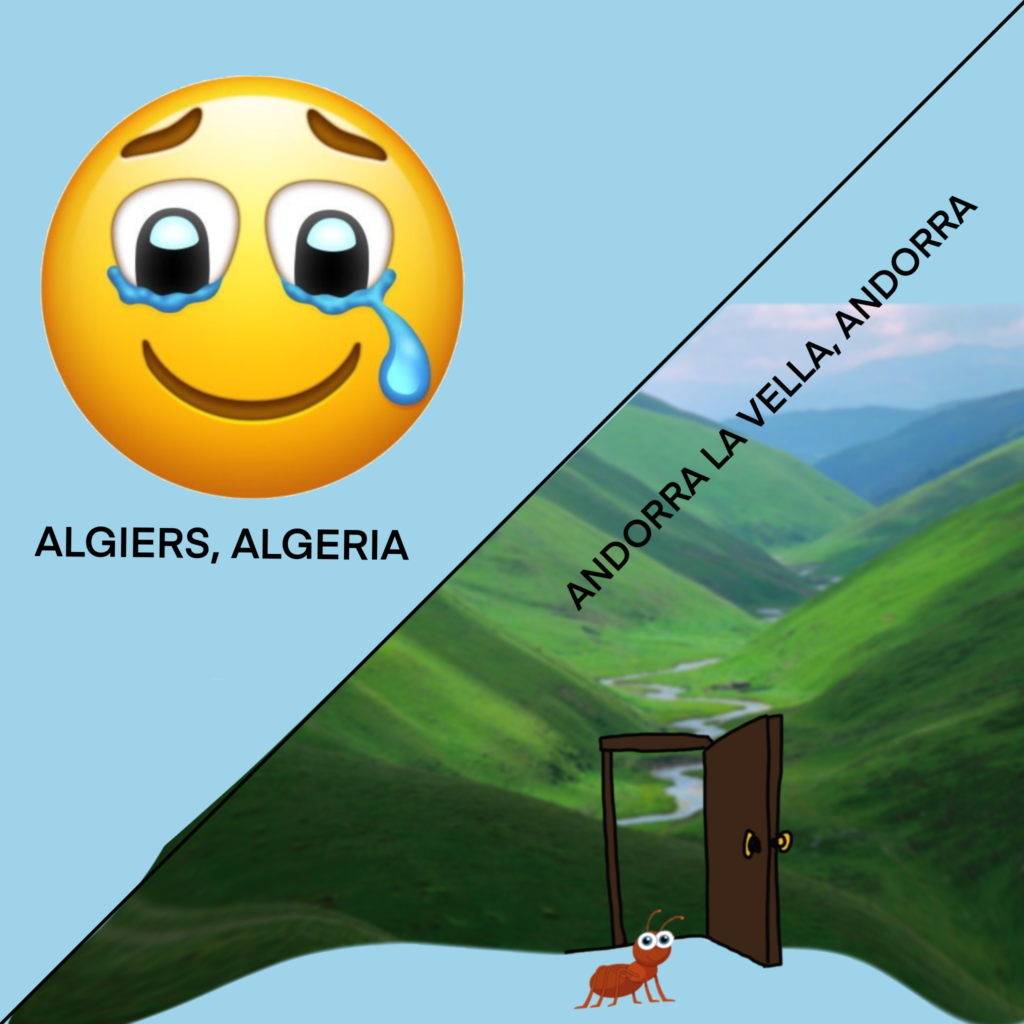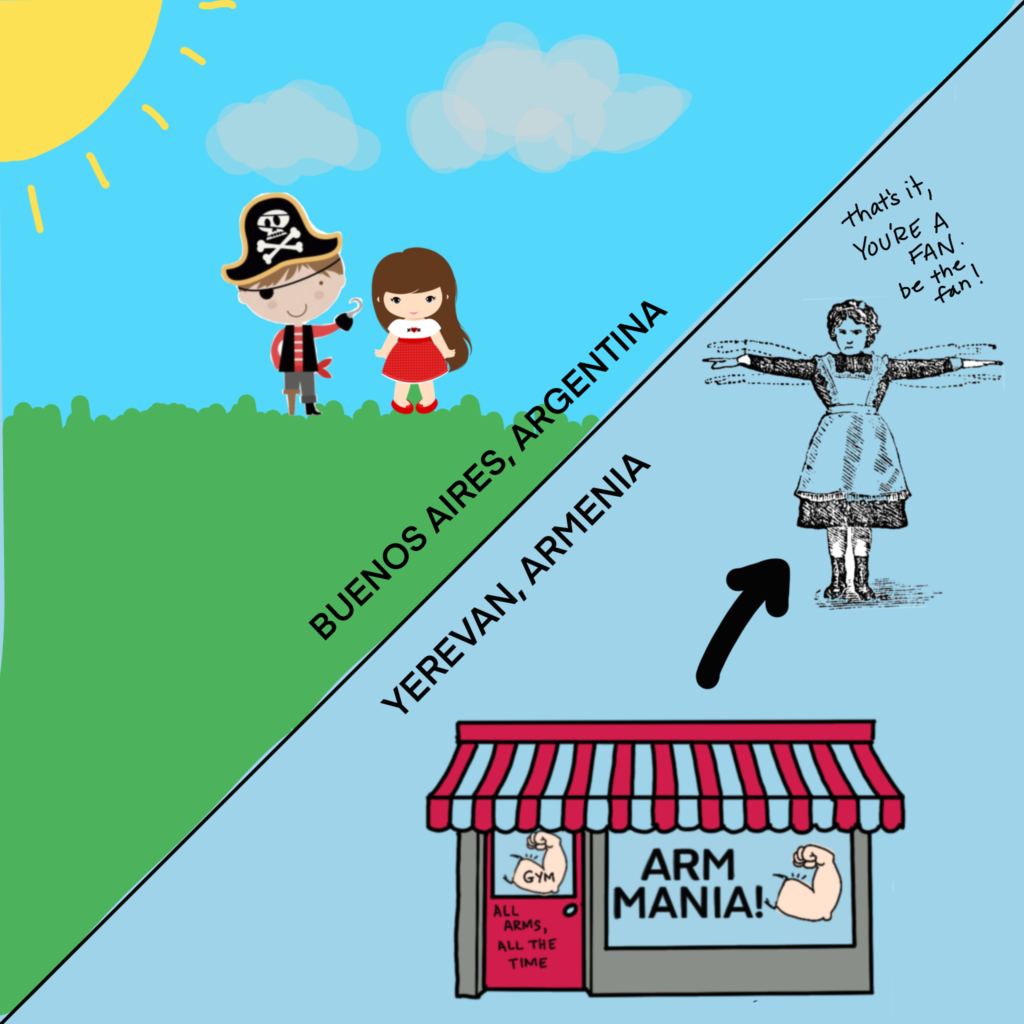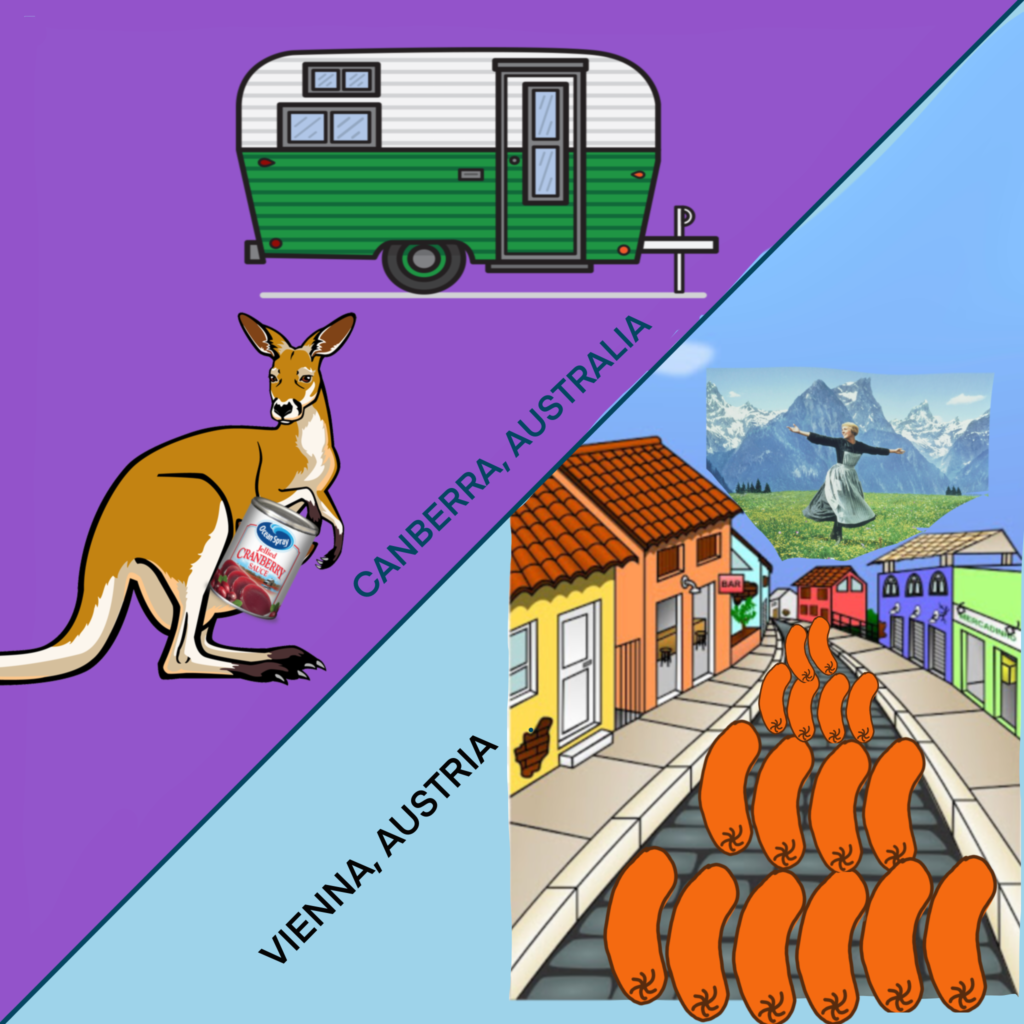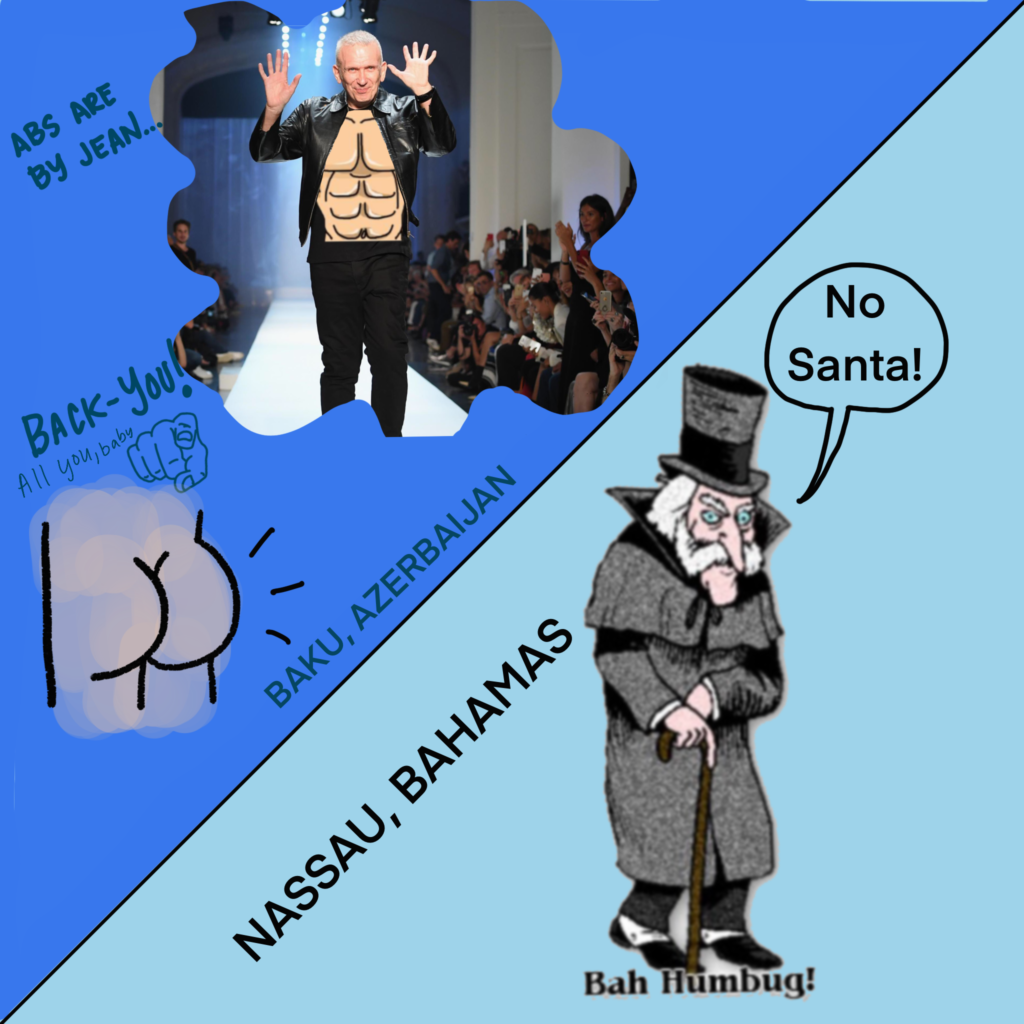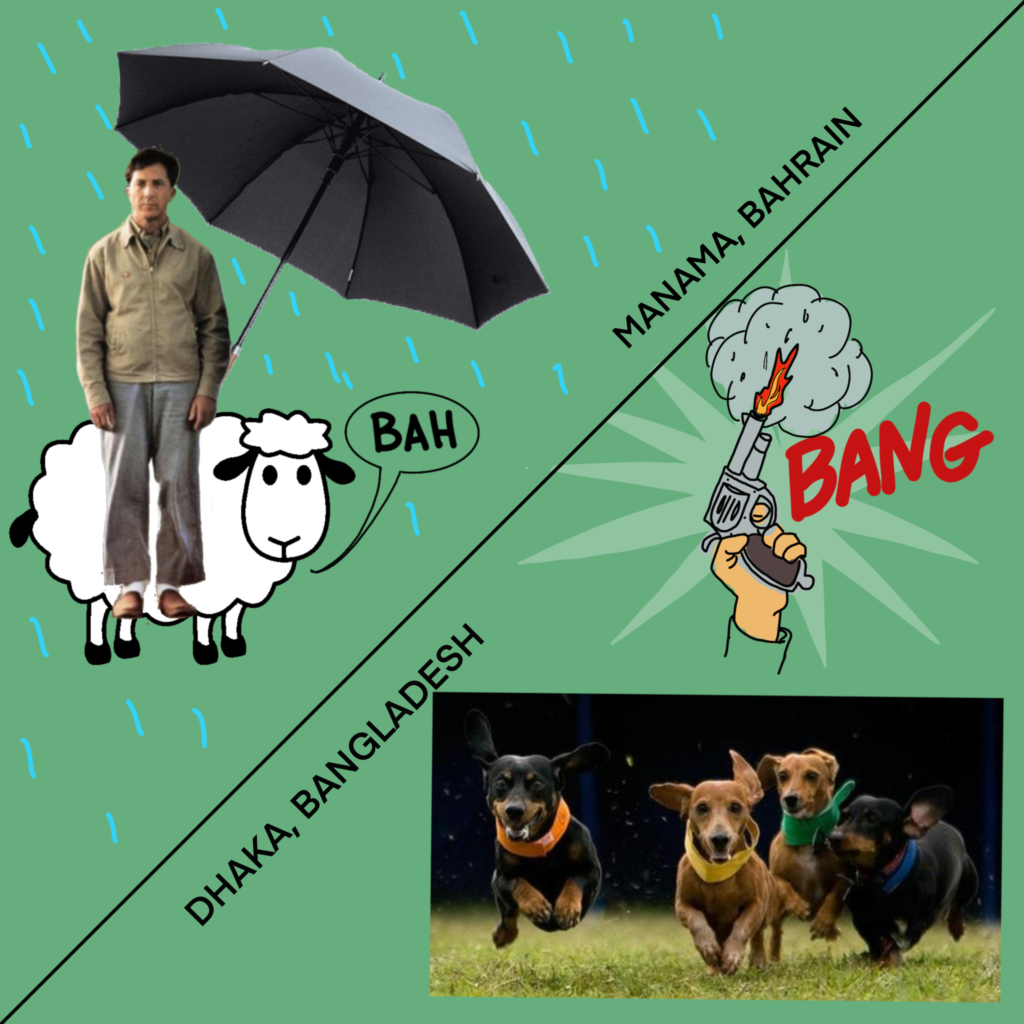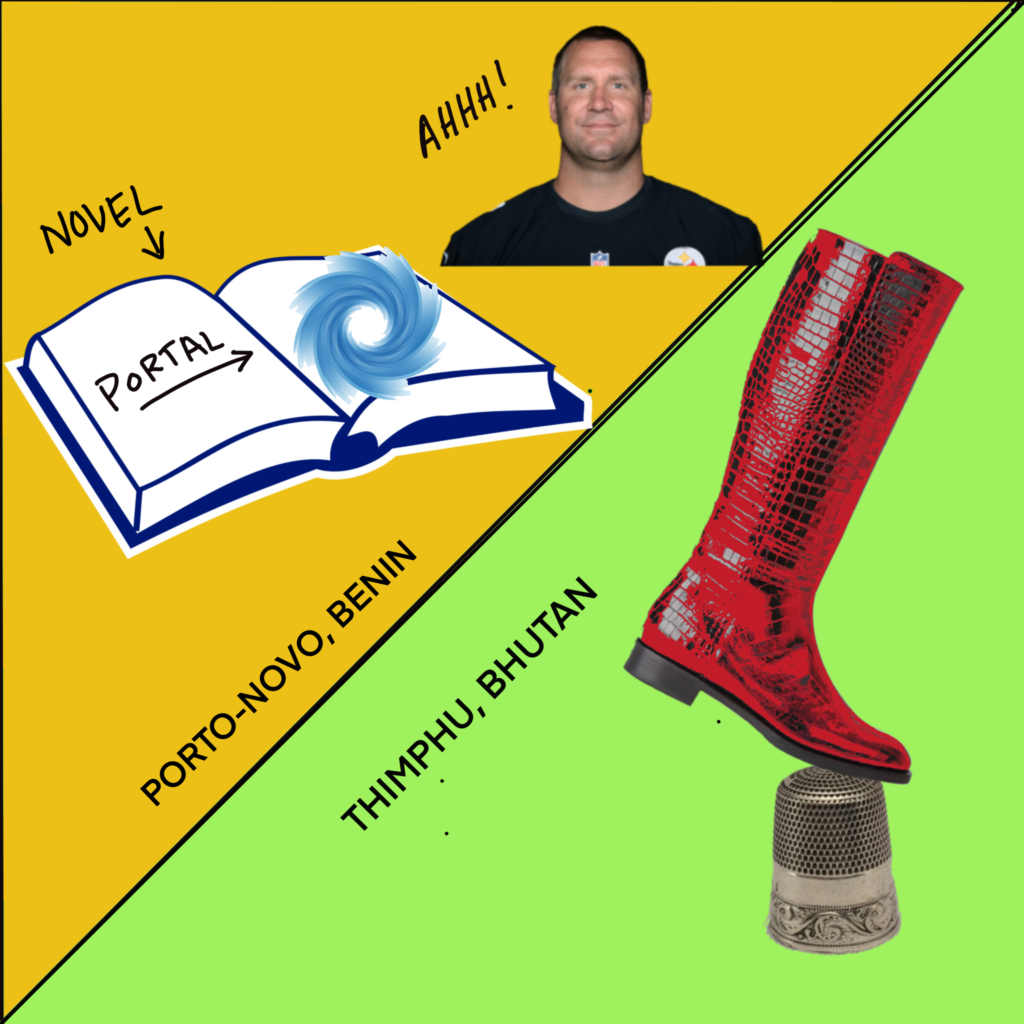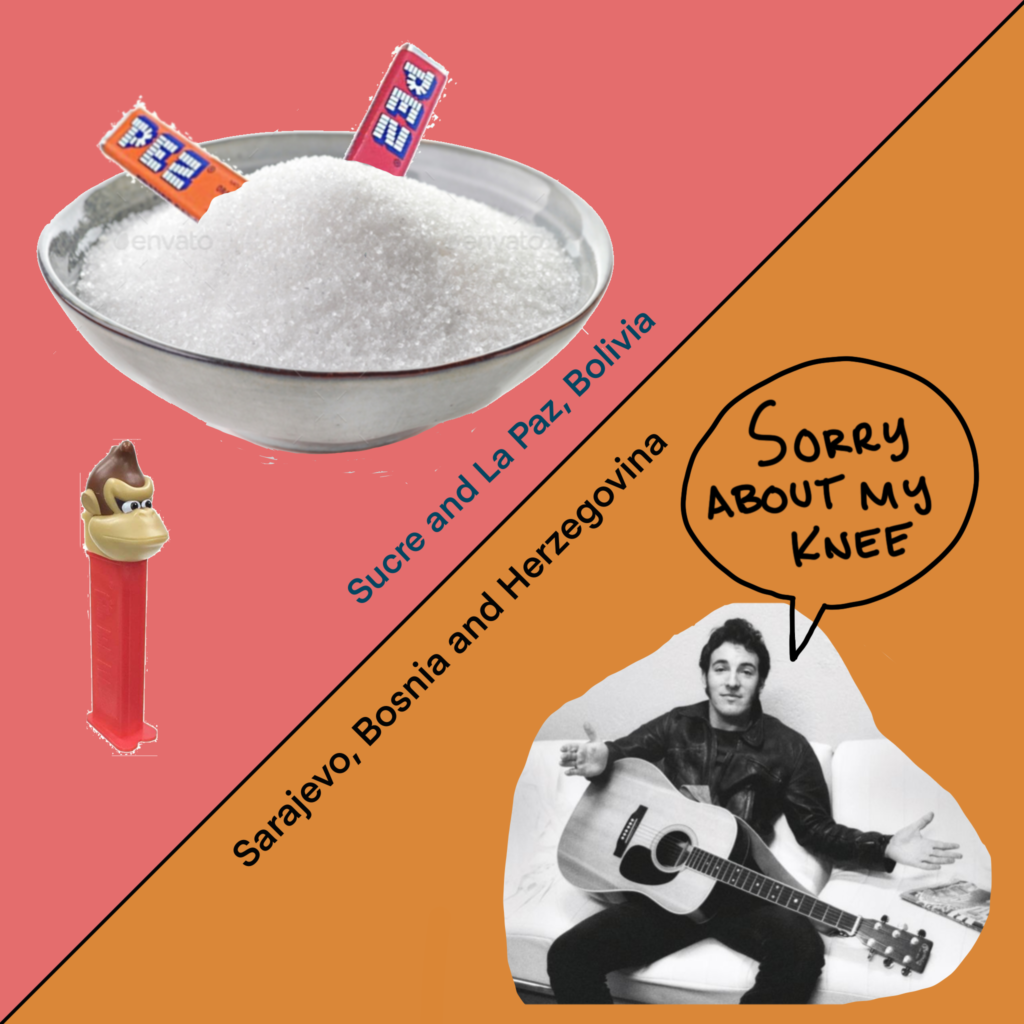This printable can be used in conjunction with my YouTube video (watch below the download) on memorizing Central America.
Places To Play in Findlay, Ohio
Print and fold this “Places to Play in Findlay, OH” mini book to take on the go.
Print and fold this mini book to take with you on the go.
Visuals: World Capitals
See my method of memorizing 196 Countries in alphabetical order, along with their Capitals in detail here. I also started using procreate to create visuals of them. I put them in pairs, since each memory palace location houses two countries. They are below and can also be found on my memorization twitter account
The Periodic Table
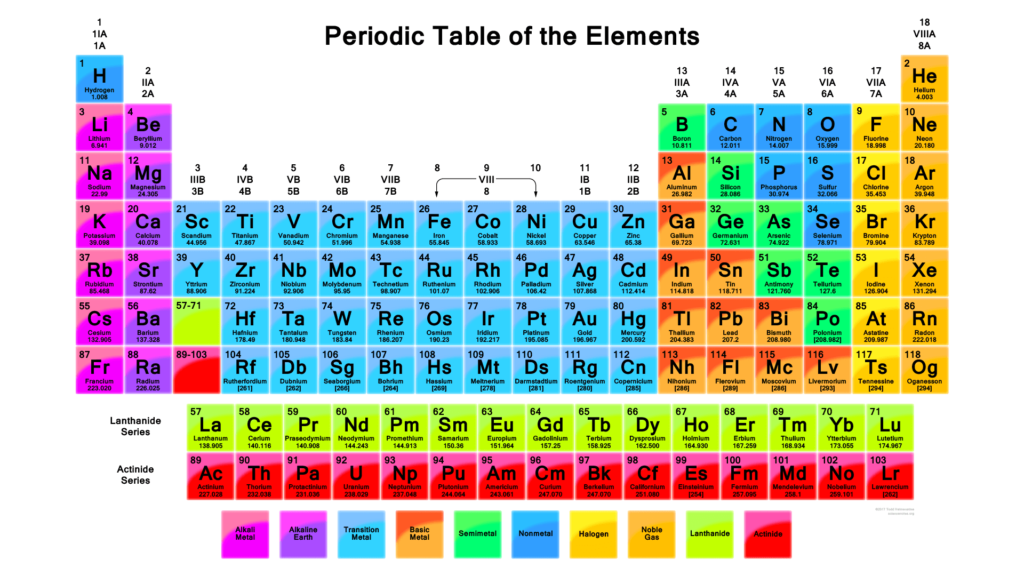
The Periodic Table of Elements was one of the my early memorizations (December, 2019), so my PAO was still in its infancy. For that reason, there’s not a whole lot of rhyme or reason to the connections I made between the element and my PAO. That is, I haphazardly connected the element mnemonic to my PERSON, ACTION, or OBJECT without much thought about the fact that that’s probably not the most efficient way. If I had it to do over, I would attach the element mnemonic to my OBJECT in each case. As it is now, when I try to place, say, element 37, I have to go through the added step of “searching” for either MiCK jagger, or MuGGing (posing for a picture), or MiCrophone. It is MiCrophone in this case:
Rb Rubidium 37 telling of all the sites by holding a MICROPHONE is jenny RUBIO. She sings R&B in between Rb.
For many of the elements, as in the Rubidium example above, I also attempted to incorporate a way to remember the symbol when it was not simply the first two letters of the element.
I find that I am still really efficient at recalling the elements and their atomic number, so it has stuck.
I used the linking story method to memorize the table (you can see my spreadsheet below). I learned the first 20 elements from the Memorize Academy YouTube video. After that, you had to pay for the rest of the content. While I think his videos are excellent, I didn’t want to shell out the money. I searched all over the internet for someone else’s work, but when I was unable to find any, I decided to tackle the task on my own. It did take time, but it was actually a lot of fun! I wrote it all in my trusty memorization notebook. Here is a sample from that notebook:
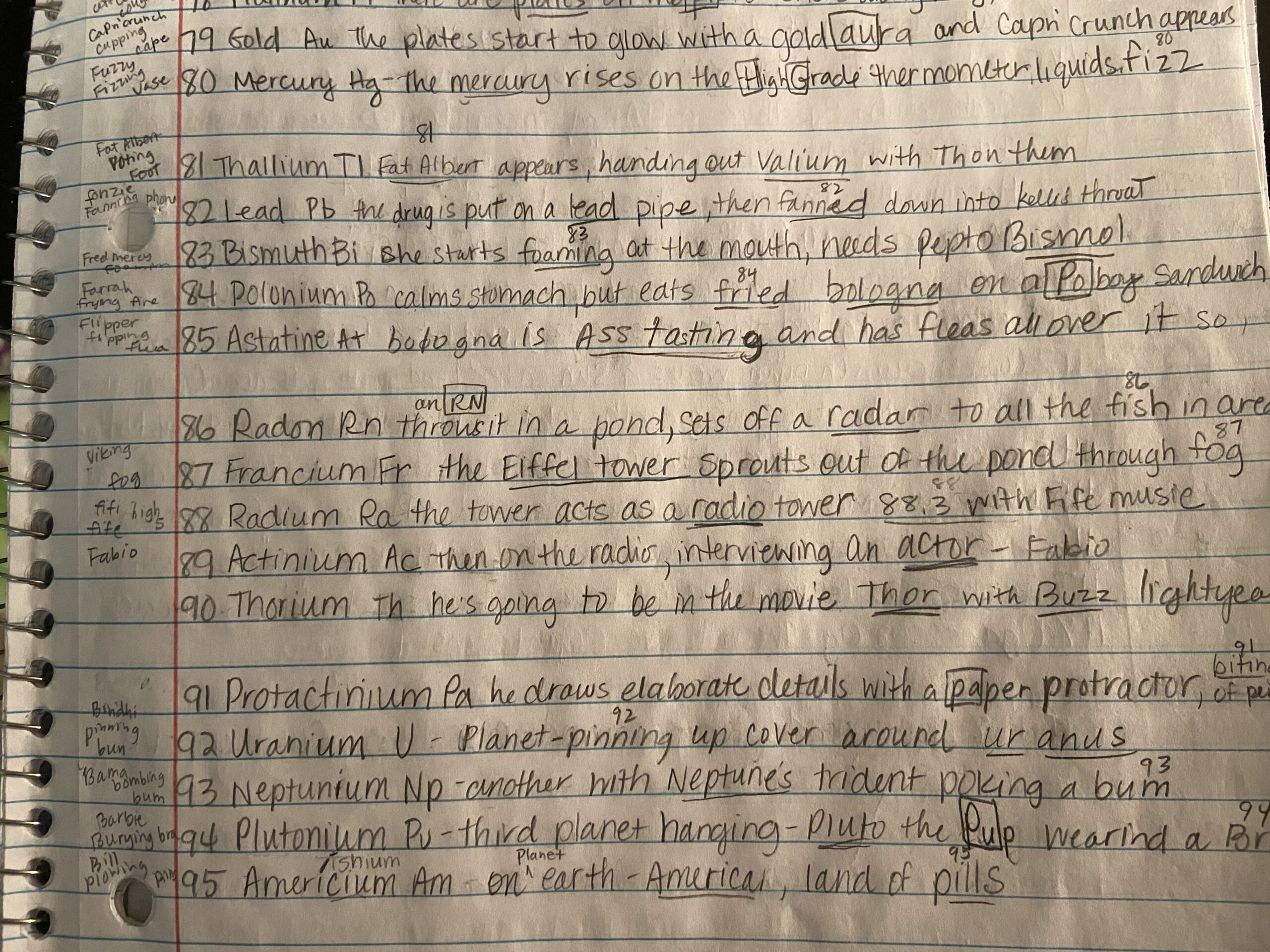
I’m sure I still remember these, in large part, because I created them. In any case, here is my spreadsheet for all 118 elements.
I’d love to hear from you about your own memorization of the periodic table!
Oscar Winners: Best Picture 1928-2019
MEMORIZING
I couldn’t sleep one night, so I decided to begin to memorize the Best Picture Academy Award Winners from the start of the awards in 1928 to the present. I memorized the year that the movie was released, which to me seems more important than the year (the calendar year following the year it was made) the award ceremony took place. That night I got to 1975 (One Flew over the Cuckoo’s Nest), because mnemonic pictures were so easy to create for these movies, especially ones that I was familiar with.
More on my method…
This was the first time I used my PERSON=YEAR method. I have used this method since then to always denote the year using my PERSON. I have found this to be a good method because
1. My people are super memorable to me and each time I see one, I know the year.
2. When I want to add additional number information–in this case the number of the award show (for instance, 2019 was the 92nd Academy Awards ceremony)–I used the OBJECT from my PAO to differentiate from the year.
I thought it would be neat to start the memory palace in my town at a specific place to match up the 1931 winner, Cimarron, with a street in my town of the same name. My plan was to go through town on a route that would end at our local movie theater. Anyone that knows me, knows that I have no sense of direction, so I think this is why I was only to 1970 (Patton) at the movie theater door. So, I revised my plan to make 100 locations (thinking ahead to the 100th annual Academy Awards!) that looped around town, back to my starting point.
At the time I memorized these movies (January 2020), I was working at the library. I was working in Media Services, where there was a lot of downtime. I figured, since I was helping people find movies, it would be OK to work on this little project of mine… I plotted all the locations into a google map and titled each pin with the year of the movie, my major system person denoting the year, and the title of the movie. If you click on the pin itself, there are added notes with my mnemonics. God, I’m a loser. But I’m sharing it here anyway:
Unfortunately, Google maps won’t embed above, so here is the pdf to view here or download:
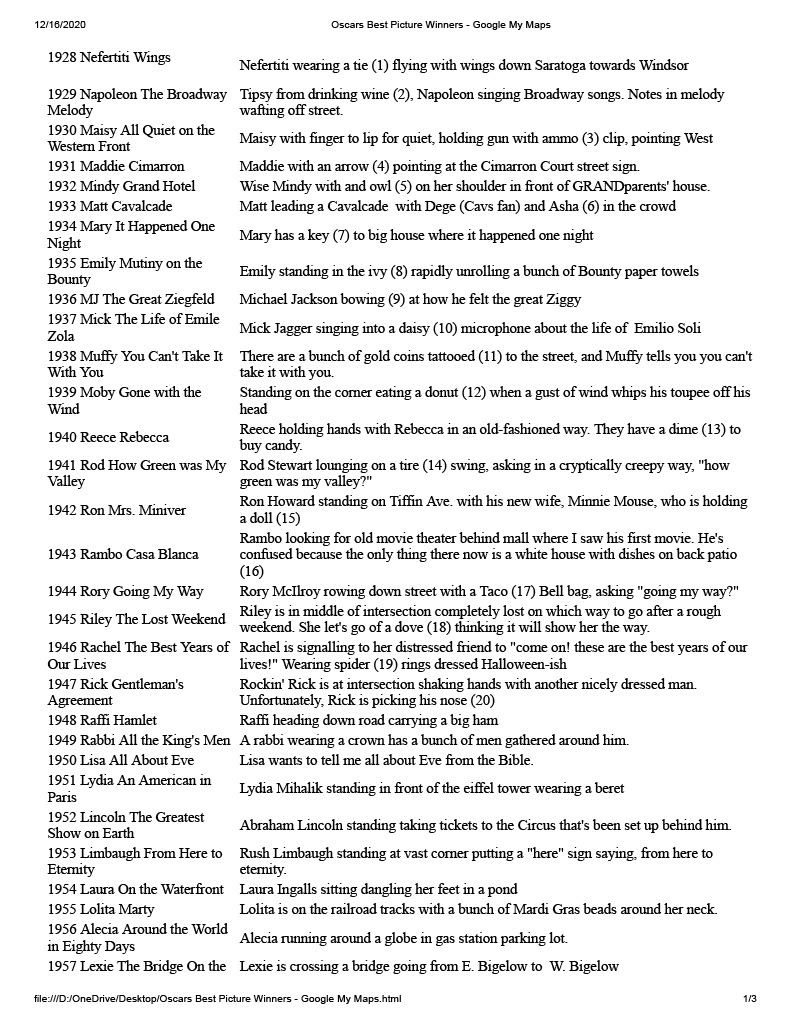
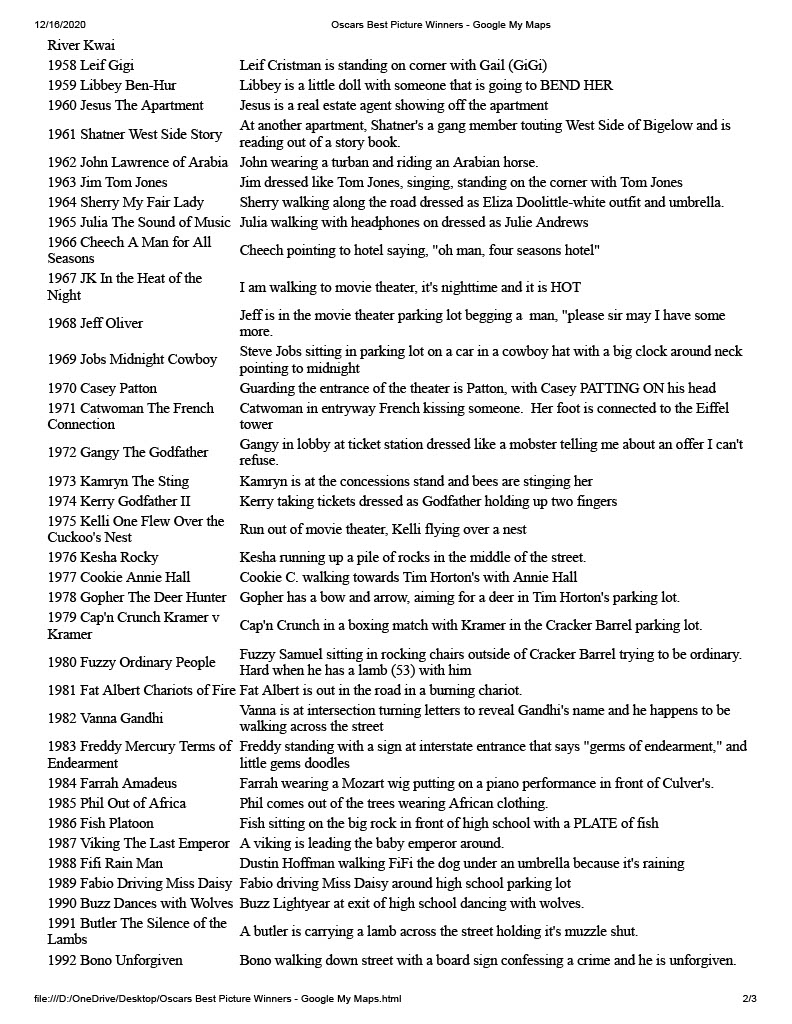
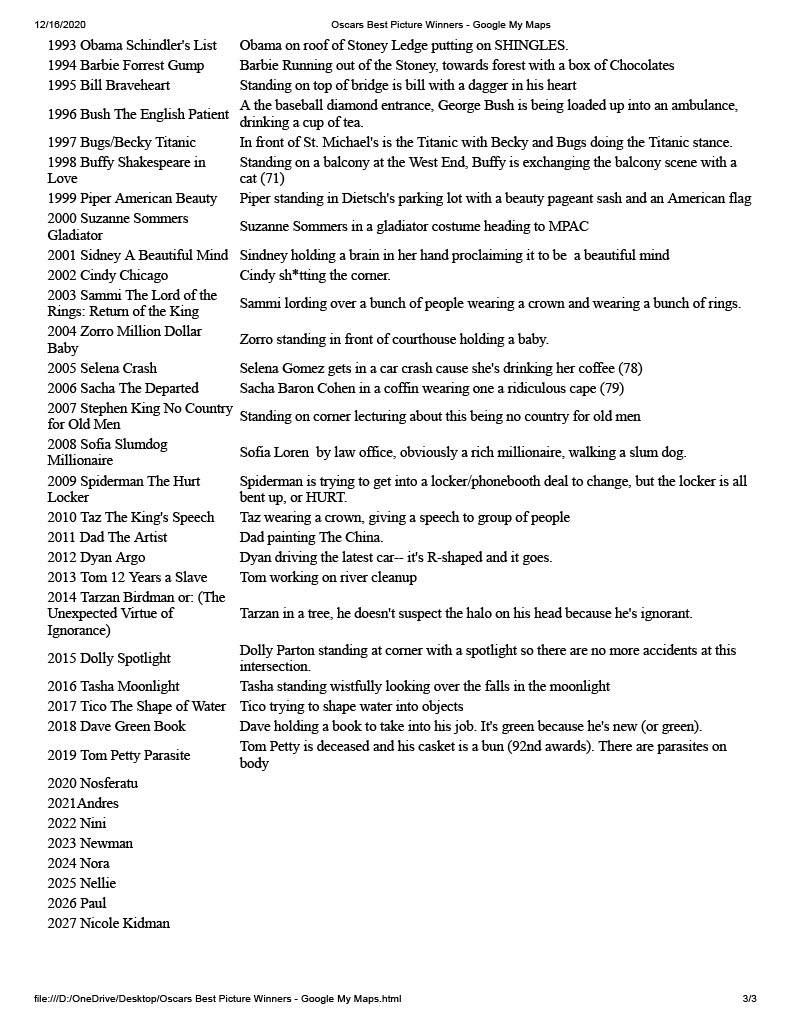
Oscar Best Picture Printable Checklist
Here is a pdf checklist I made that you can print, fold, and use to track the Best Picture winners that you have already seen and can easily see those that you still need to catch!
If you’ve never folded a mini book out of a sheet of paper, you can find the instructions here, or just follow this diagram from the good people at https://pocketmod.com/
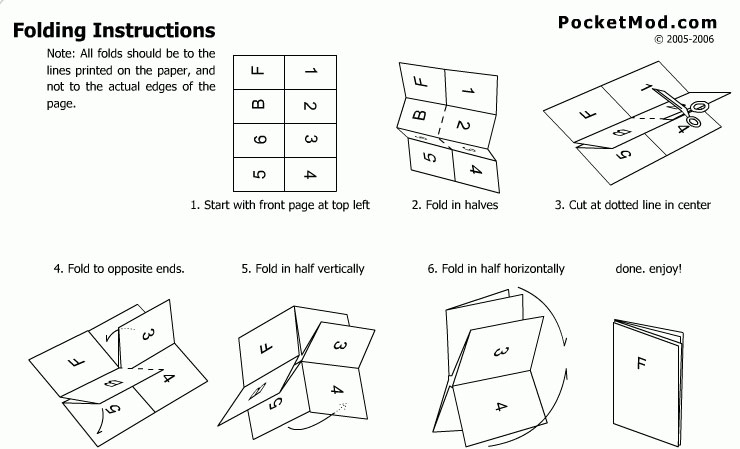
You’ll end up with this:
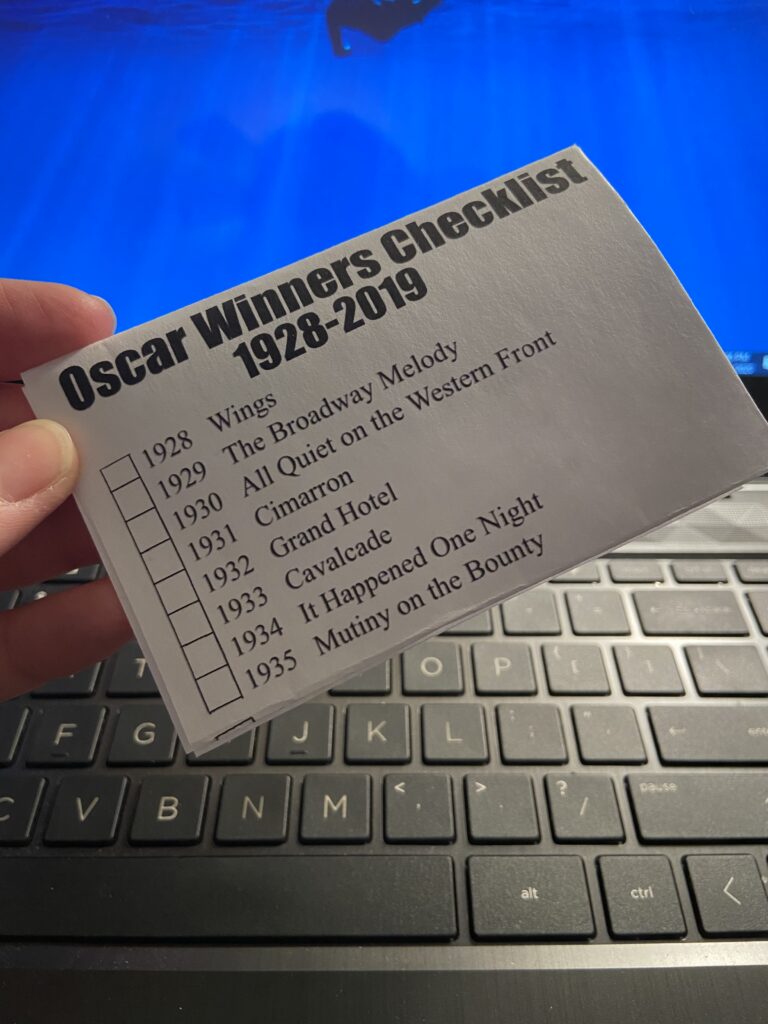
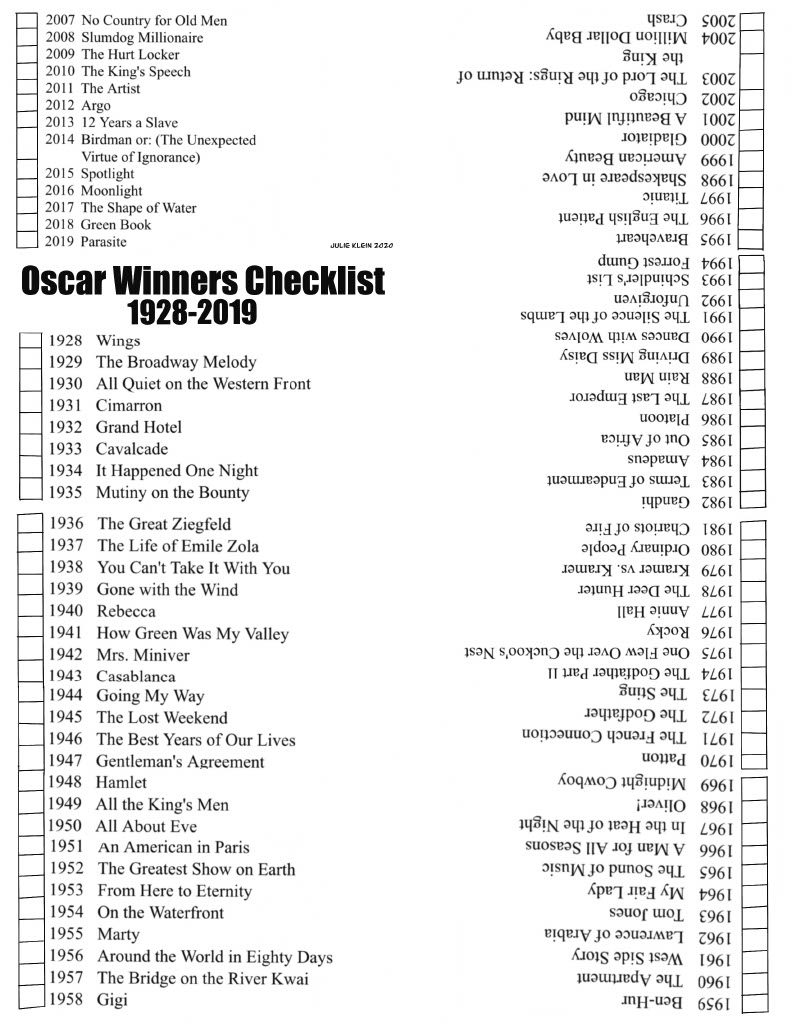
Memorizing South America
South America, with it’s 13 countries of unique shapes, is an easy continent to memorize. I’ve created a youtube video detailing exactly how you can do that! It can be found here.
Below are pdfs of the material. Feel free to download for your personal use.
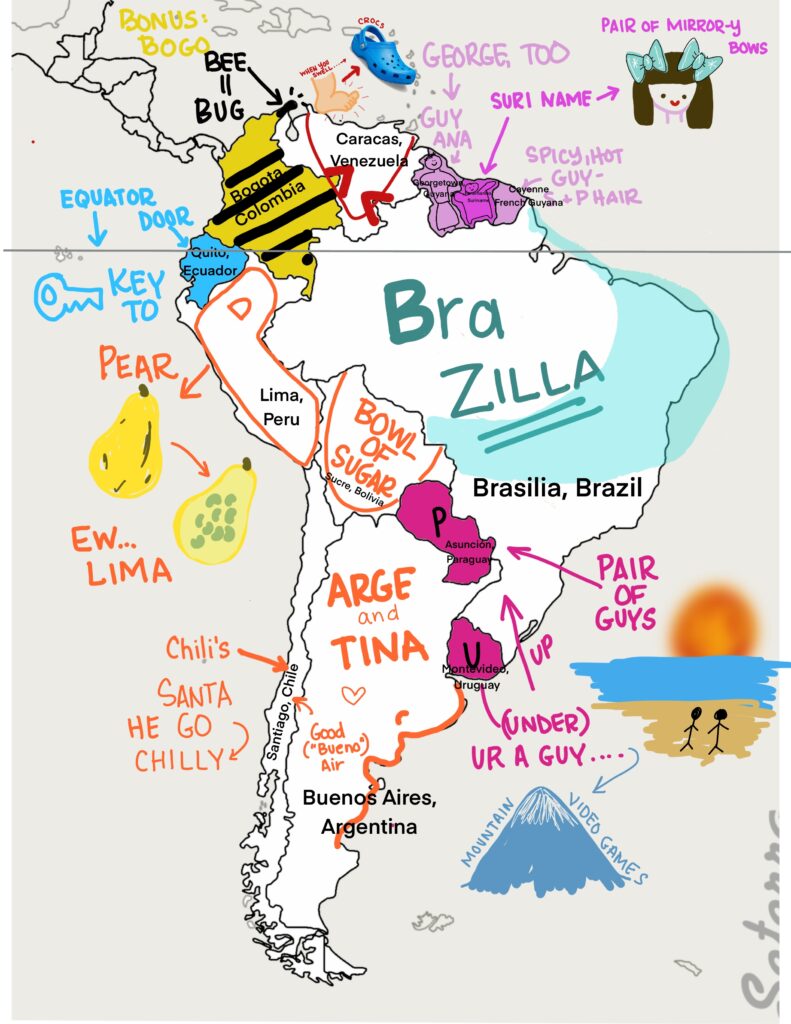
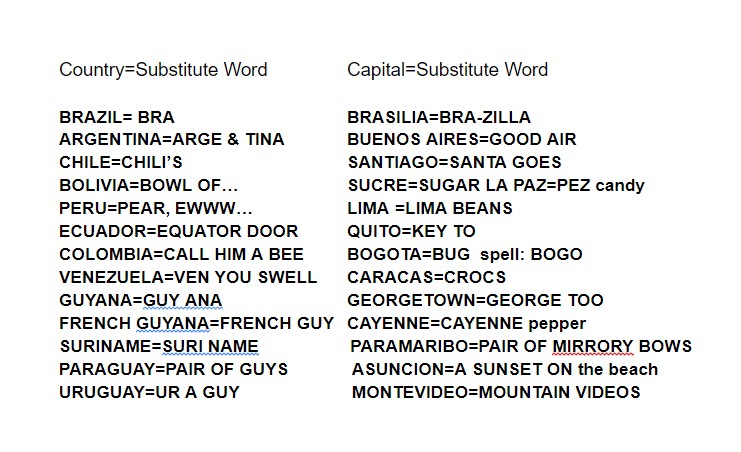
If reading is more your thing, use the link below to access the script that I used for my video.
Learning World Countries and Capitals
I thought it would be fun to memorize all the world’s countries! It seemed like such a daunting task, that the first step I took was to see if anyone else had already done the work for me. With the world capitals, I was only able to find paid content. Not wanting to pay, I decided to tackle the task on my own.
I began by trying to find an accurate list of the countries and capitals which, as it turns out, is not an easy task. Countries are forever changing and merging and separating, and some countries like to call themselves countries, but really aren’t recognized as such by one or more other countries. I finally decided on a list of 196 countries recognized by the United Nations as sovereign states…the US has a different number…but anyway.
I then created mnemonics for, and memorized, the first 8 or so countries. Later that day, when I wanted to practice them when I didn’t have the list in front of me (in the car), I couldn’t recall all the countries that I had learned, so I could not practice effectively. I changed tack at this time and decided to place the countries in a memory palace of 100 locations, with two countries in each location. I had been working on just such a memory palace for another purpose, but 100 locations is a lot, so I decided to use it for the countries.
Since I had intended originally to use the memory palace as a repository of historical facts, I had made ten different “palaces” in places that reminded me of a particular decade. For instance, the 60s are at the Brady Bunch house. In the table below are the locations (each containing 10 locations around/inside), my reasoning behind them, and a brief description of the transitions I use to easily get from one palace to the next. I don’t imagine someone else would have use of these exact locations, but the concept is a good one, I feel, and could be adapted.
| Decade | Location | Rationale | Transition |
| 00s | Apartment Building, South Bend, IN | Lived here during some of these years | Returned from SB, kids started at school |
| 10s | St. Michael School, Findlay | We moved back to Findlay and, with five kids, I spent a good amount of time here during these years | Dwayne “the rock” (Republic of Congo) Johnson leaves school, goes to zoo |
| 20s | Toledo Zoo | The roaring 20s were zoo-like, as the current 20s seem to be starting, as well | On the carousel, flung off back to the 1930s |
| 30s | Grandparents’ farmhouse | Going for a depression-era vibe, a la the 1930s | Take my bagpipes (Baghdad)to perform at performing arts center |
| 40s | Marathon Performing Arts Center | I spent a lot of time here in my (early) 40s as my kids were in a lot of theater shows | My lithe Uncle Wayne (Lithuania) is a villain (Vilnius) and is going to go rob the ice cream shop |
| 50s | Dietsch’s Ice Cream Shop | Definitely a 50s soda shop feel | My aunt Martha going to visit the Brady Bunch house |
| 60s | Brady Bunch house | Show made in the 60s | A large pole (Poland) falls on a portly gal (Portugal) walking in front of my childhood home |
| 70s | Childhood home | Lived here as a child in the 70s | A creepy, solemn man (Soloman Islands) follows me to my high school |
| 80s | Findlay High School | I attended in the 80s | A turkey (turkey) drives a car to see the turkey men (Turkmenistan) on Frazier St. |
| 90s | 304 Frazer St. | Lived here during college | Done! |
After I established the palace, it was just a matter of plugging in the countries and capitals. Because there are two countries per location, oftentimes the mnemonics are interacting between the two countries. For that reason, the countries will forever be in alphabetical pairs in my mind.
In hindsight, I really wish I would have ordered them in some order more useful and informing than alphabetical order, such as population, but it’s too late for that. I will say that when these were new to me, if I would draw a blank on the next country, I could quickly figure it out since they are in ABC order. But even this is only useful if I’m forced to recite the countries in alphabetical order, instead of doing what the real purpose of this exercise is, which is to recall the capital.
Overall, I enjoyed learning the capitals in this way and want to share my methods. I plan on a youtube video in the future, but for now, I have begun making these fun graphic aids:
To remember that the capital of BAHRAIN is MANAMA, picture a sheep saying BAH with RAIN MAN riding him. The capital of BANGLADESH is DHAKA. The starting gun goes BANG, and the DACHshunds start their race.
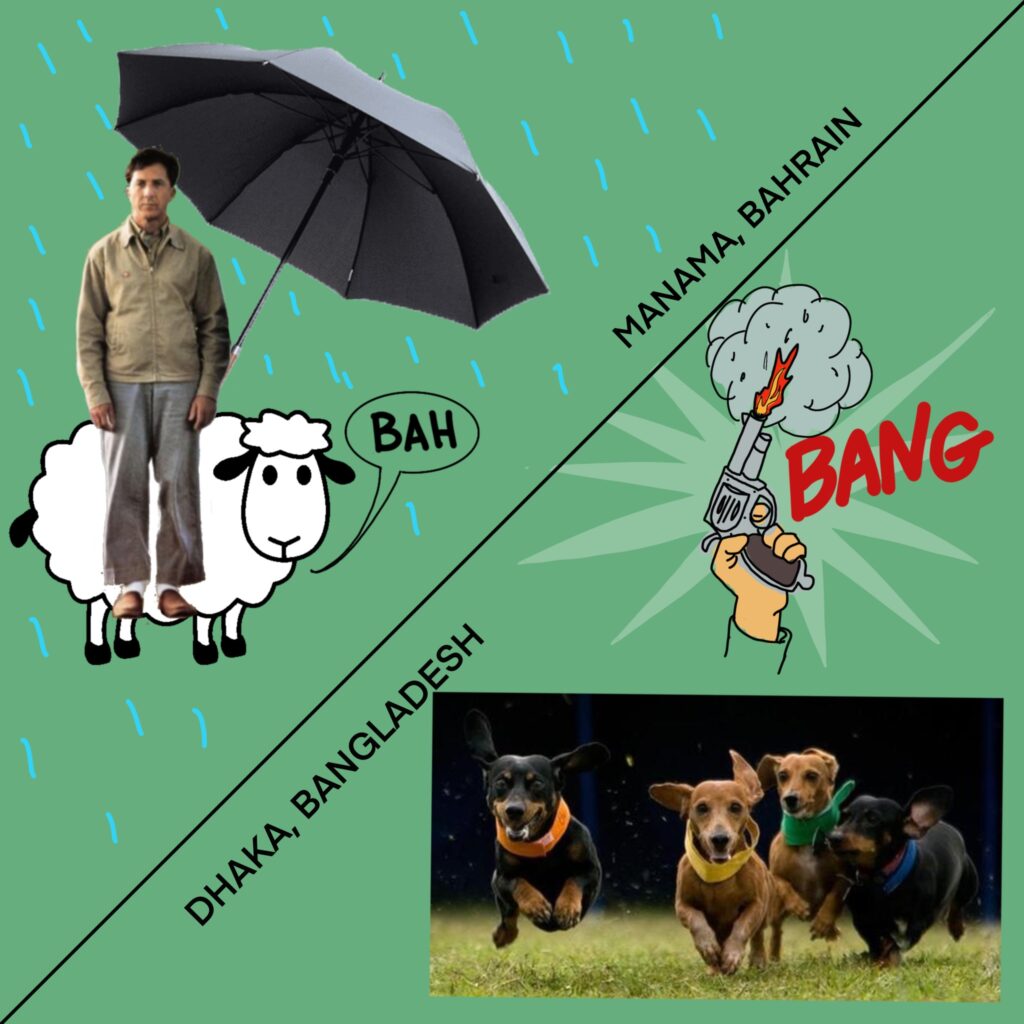
You can see these on my site here and on my twitter memorization account, @MemorizingIsFun I don’t know that I will ever make these for all 196 countries, but there are at least 20 of them on there for now. I’ve also included my original, although probably a bit cryptic, and maybe even outdated, spreadsheet for anyone that might find it useful. It is available for download below.
Memories of My Memories
When I was in the 7th grade in 1984, my geography teacher required us to memorize all of the state capitals. My mom bought me this weird book by Jerry Lucas called Ready, Set, Remember. I immediately loved it, and was able to quickly memorize all 50 state capitals. I am still able to do so to this day, based on the pictures that this book implanted into my brain.

Thirty or so years later, I dug up that book from my parents’ house to show my own kids. I became excited about the state capitals all over again. I also tackled the presidents in order at this time , which I hadn’t done previously, and even taught them to my then 6-year-old daughter who, five years later, can still recall them. Then I had another memorizing lull until the summer of 2019 when I spotted this book in a gift shop:

It really reignited my desire to memorize, and I have been at it since then. I used Nelson Dellis’s pictures, stories, and idea for a few of the things he had in the book, such as the 10 tallest mountain peaks and the 10 most populous countries, but the book was really useful in that it helped me learn how to build a foundation to memorize anything on my own. The Dellis book introduced me to the PAO (Person/Action/Object) system of learning numbers, something that, at first, seemed completely out of reach, but I persevered and this is really what has allowed me to learn the things I want to learn, such as the Periodic Table and the best picture Academy Award winners and their years. I always try to find what other people have created when trying to memorize, but there is not a lot, unless you want to pay for it, so I created my own mnemonics. I will share all of that here as we go along. Posting soon: notes on my most recent memorization of all 196 UN recognized countries’ capitals.
